Abstract
This study demonstrates functional independence in the acquisition of mands and tacts. Some subjects first learned to mand the experimenter's placement of objects with the prepositional phrases “On the left” and “On the right.” They were regularly tested for collateral appearance of tacts with these same phrases. Other subjects learned to tact the location of objects with these prepositional phrases and were regularly tested for collateral appearance of mands. All subjects were next trained in the repertoire that had not been trained in the first condition (either tact or mand). After all subjects had learned both to mand and to tact correctly, another assessment of mand-tact independence was undertaken. Mands (tacts) were reversed and testing assessed collateral reversal of tacts (mands). The results demonstrated that tacts and mands, even when incorporating identical response forms, were functionally independent during acquisition. Subsequent modification of one repertoire (by reversal training) produced collateral reversal in three of nine subjects.
Keywords: verbal behavior, functional independence, mands, tacts, prepositional phrases, children
Full text
PDF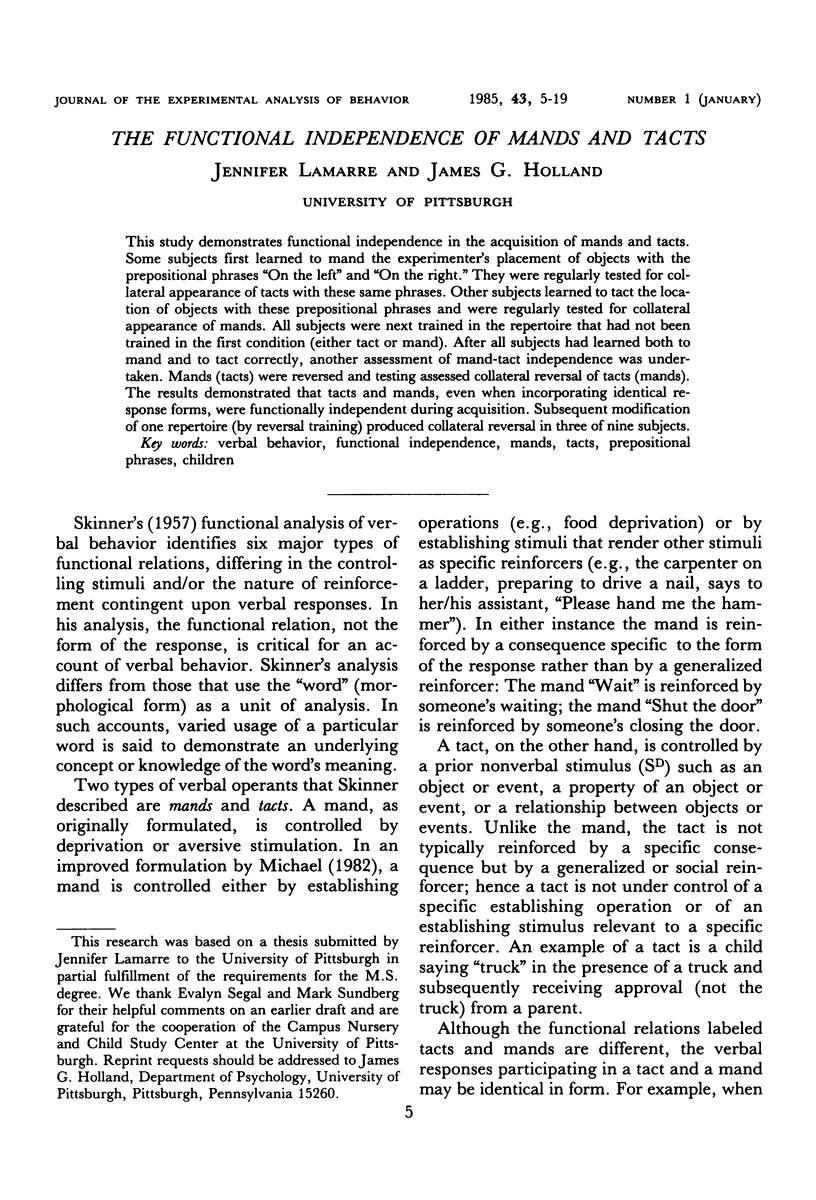
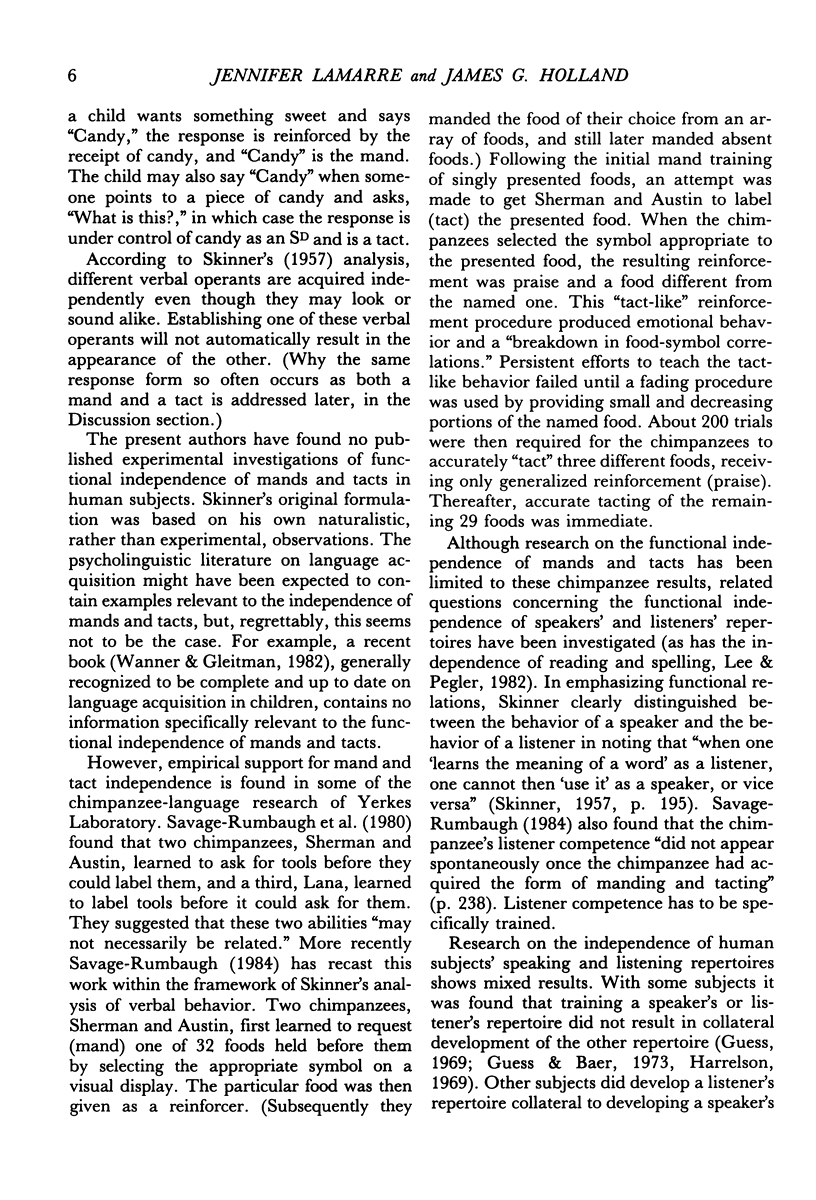
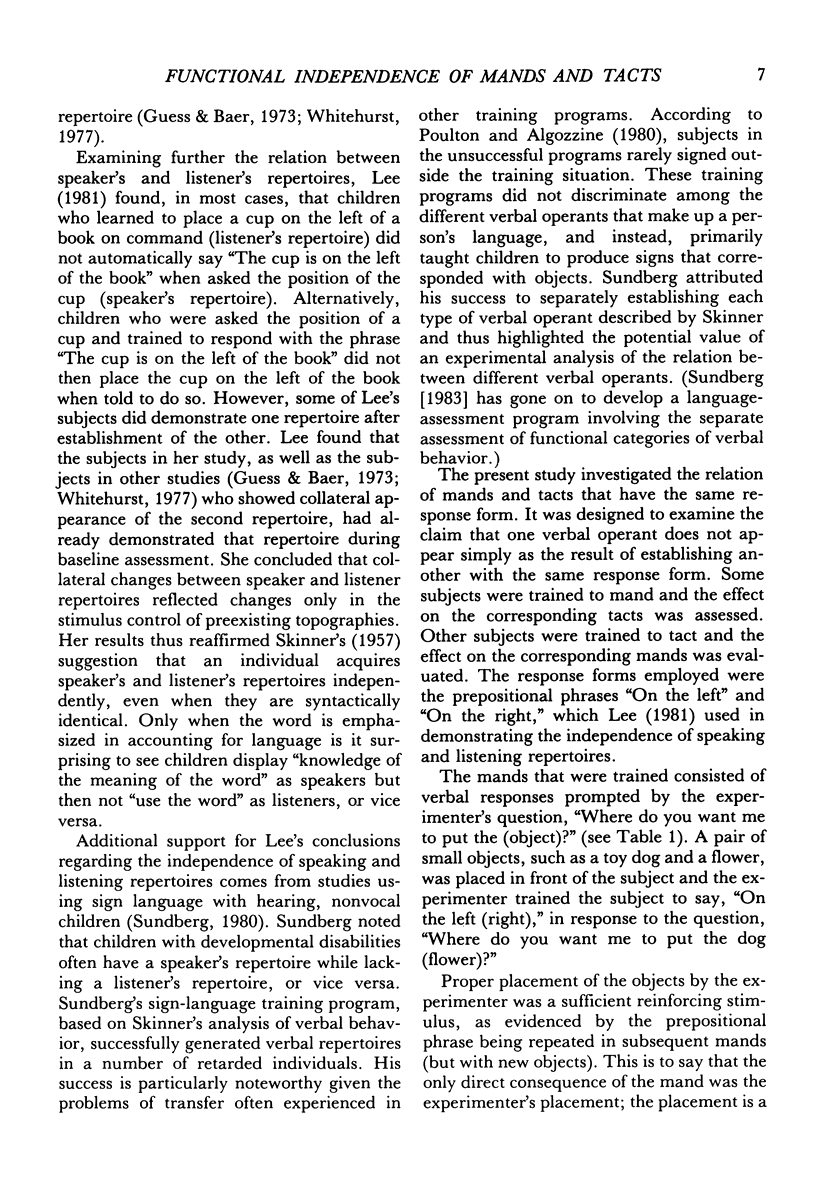
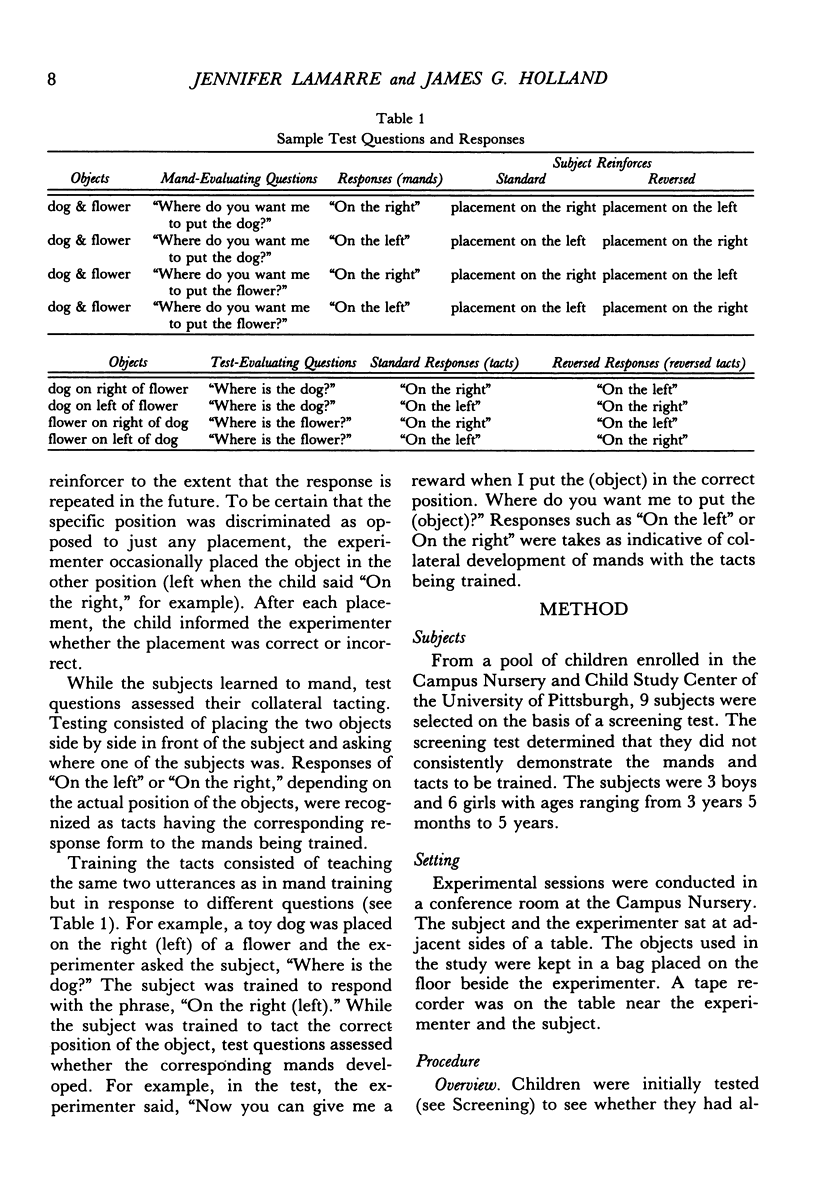
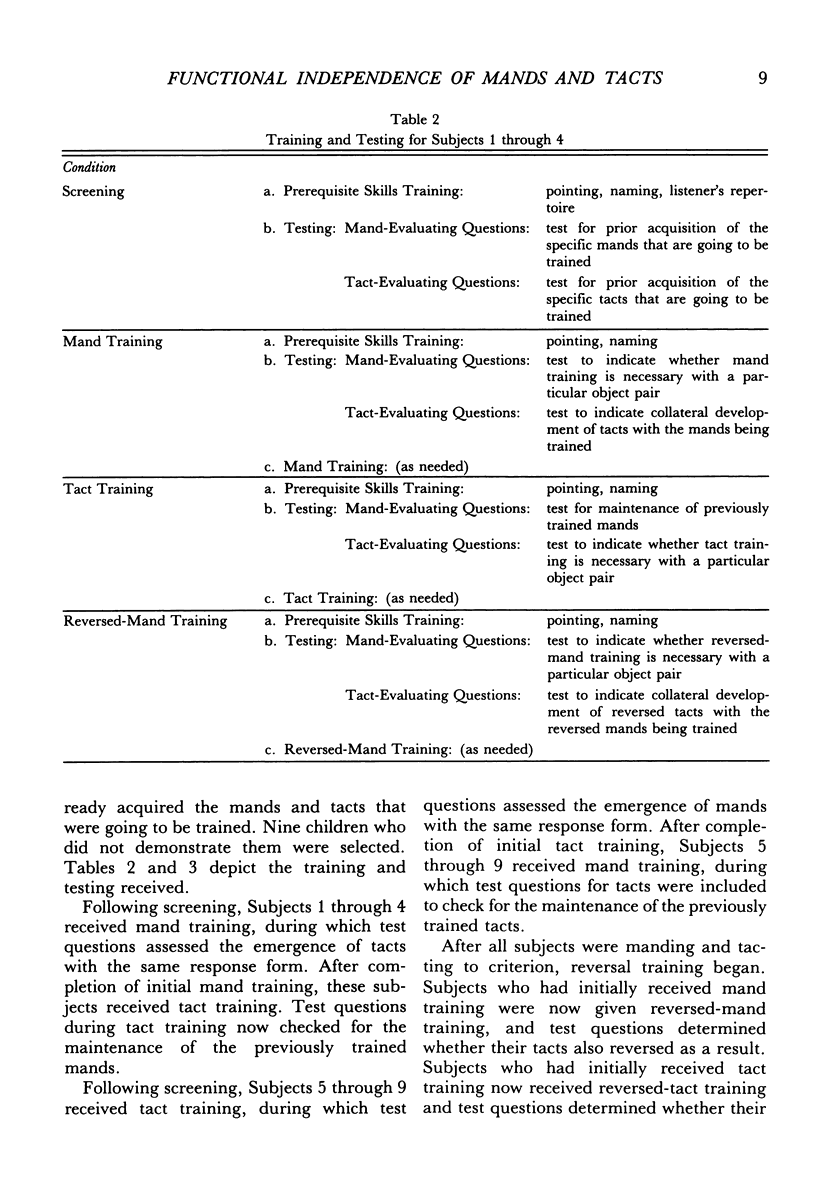
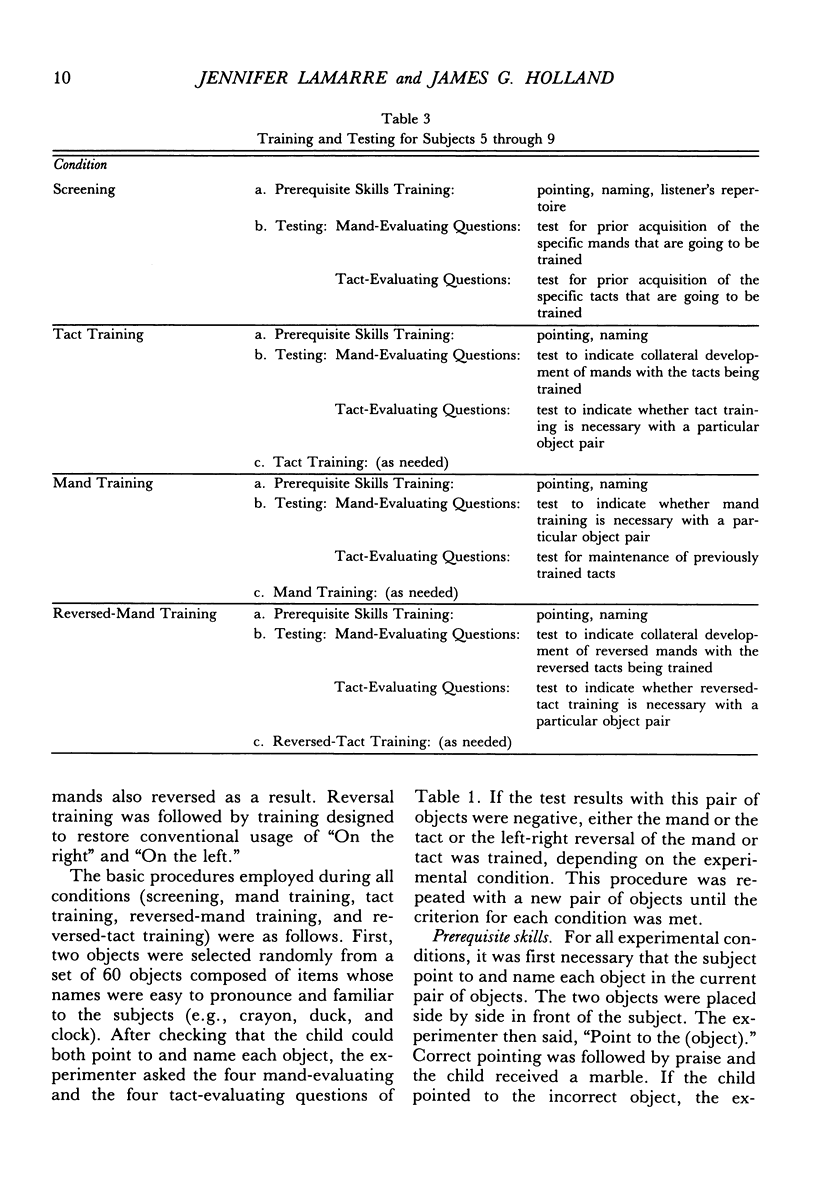
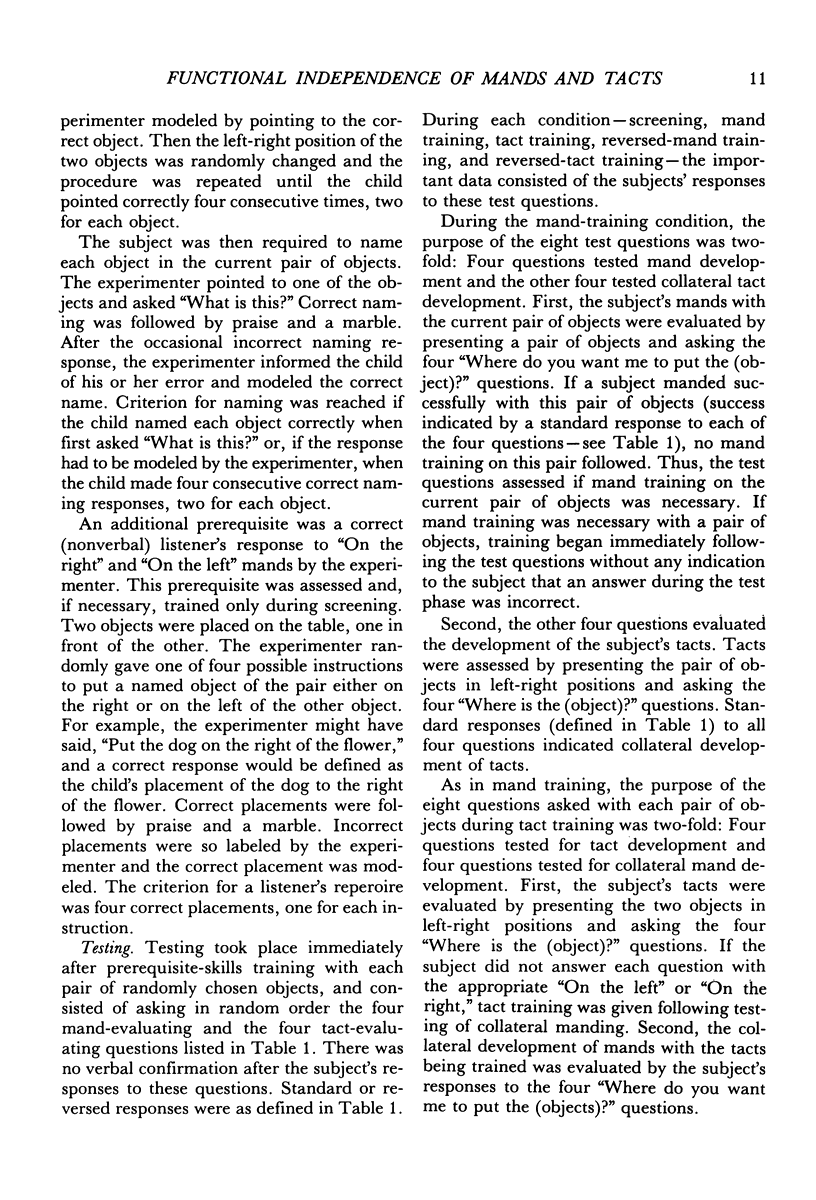
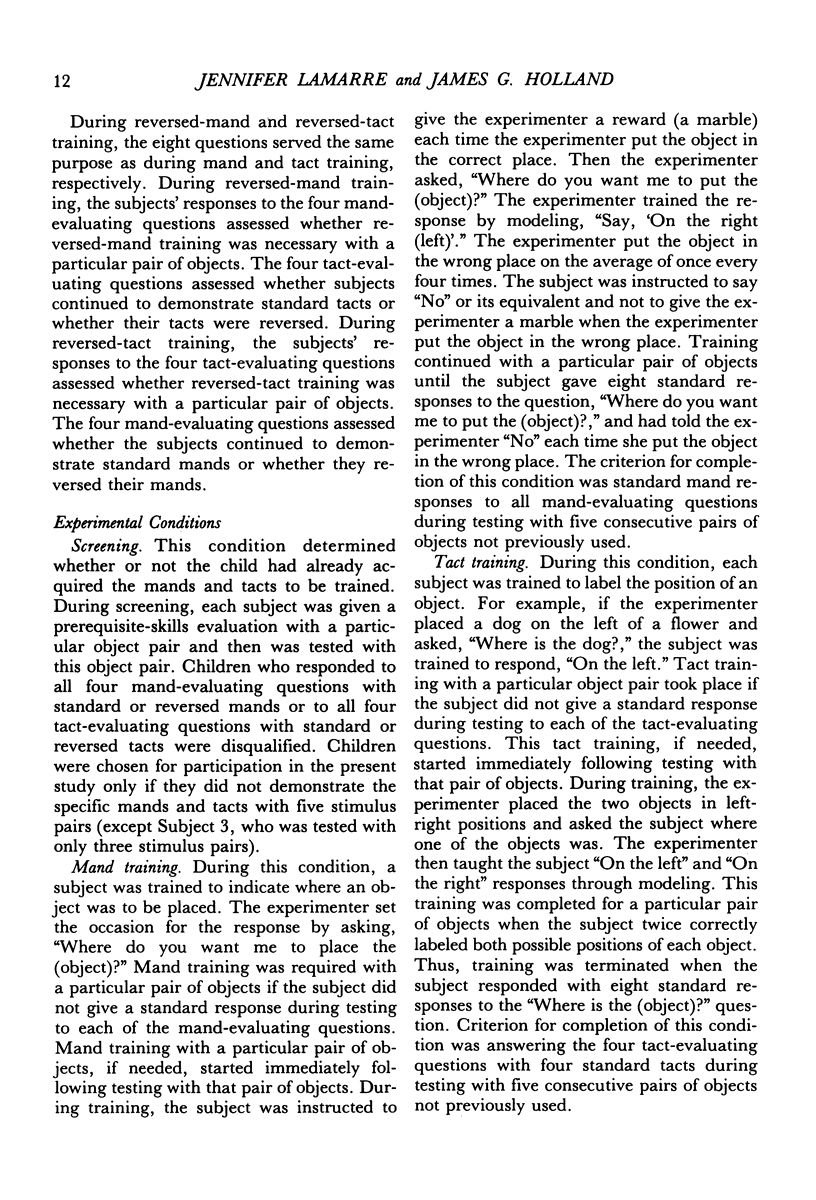
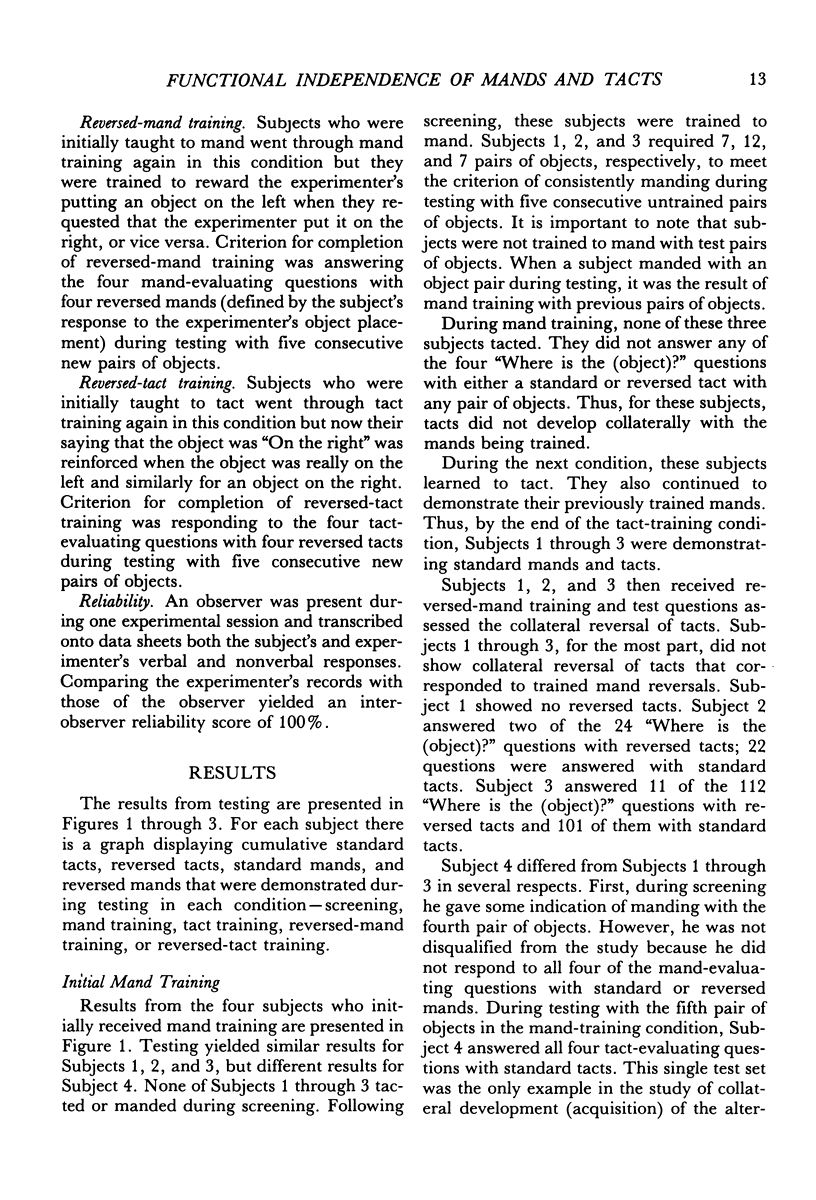
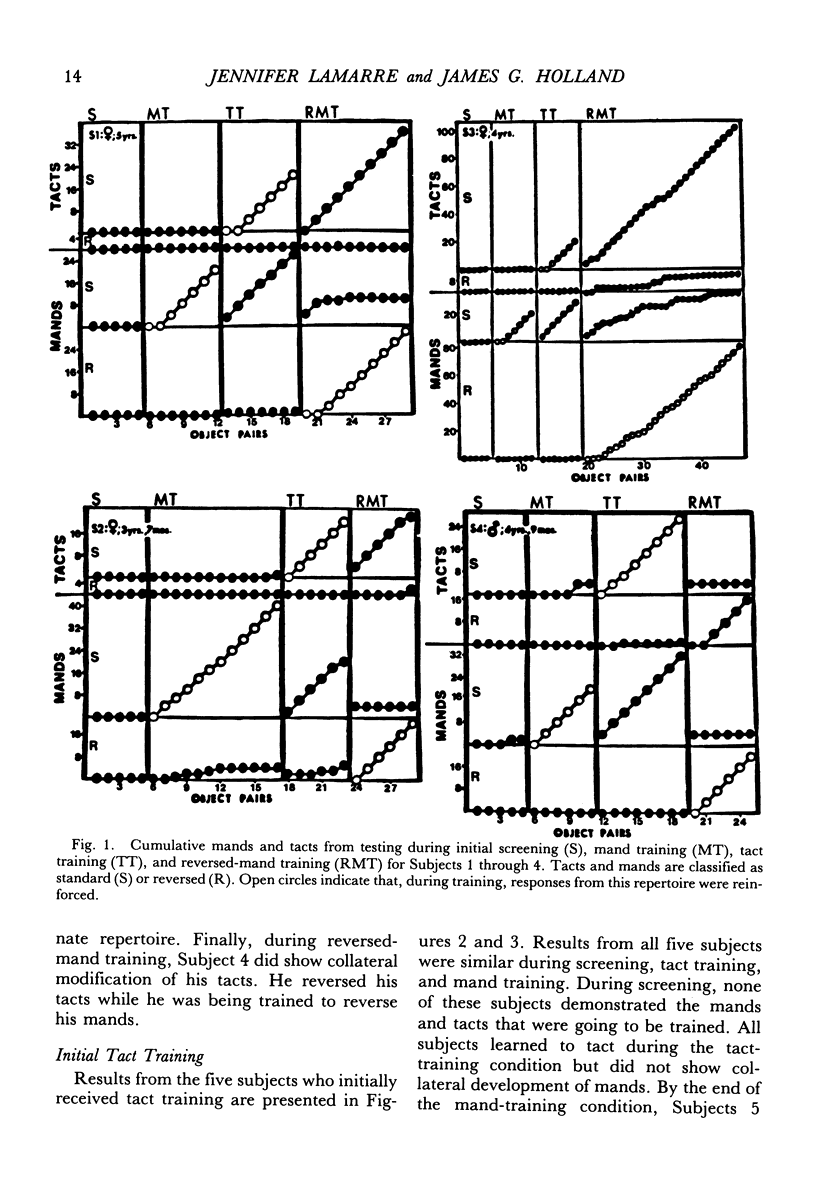
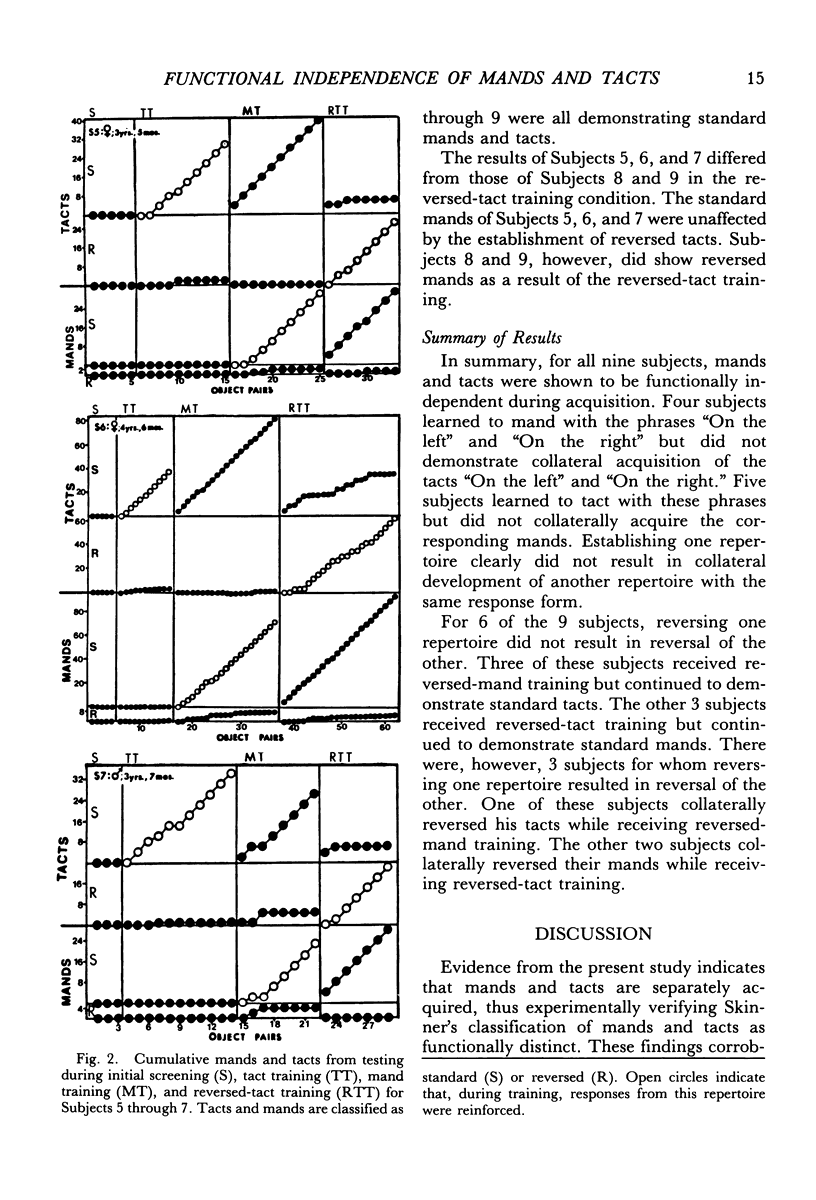
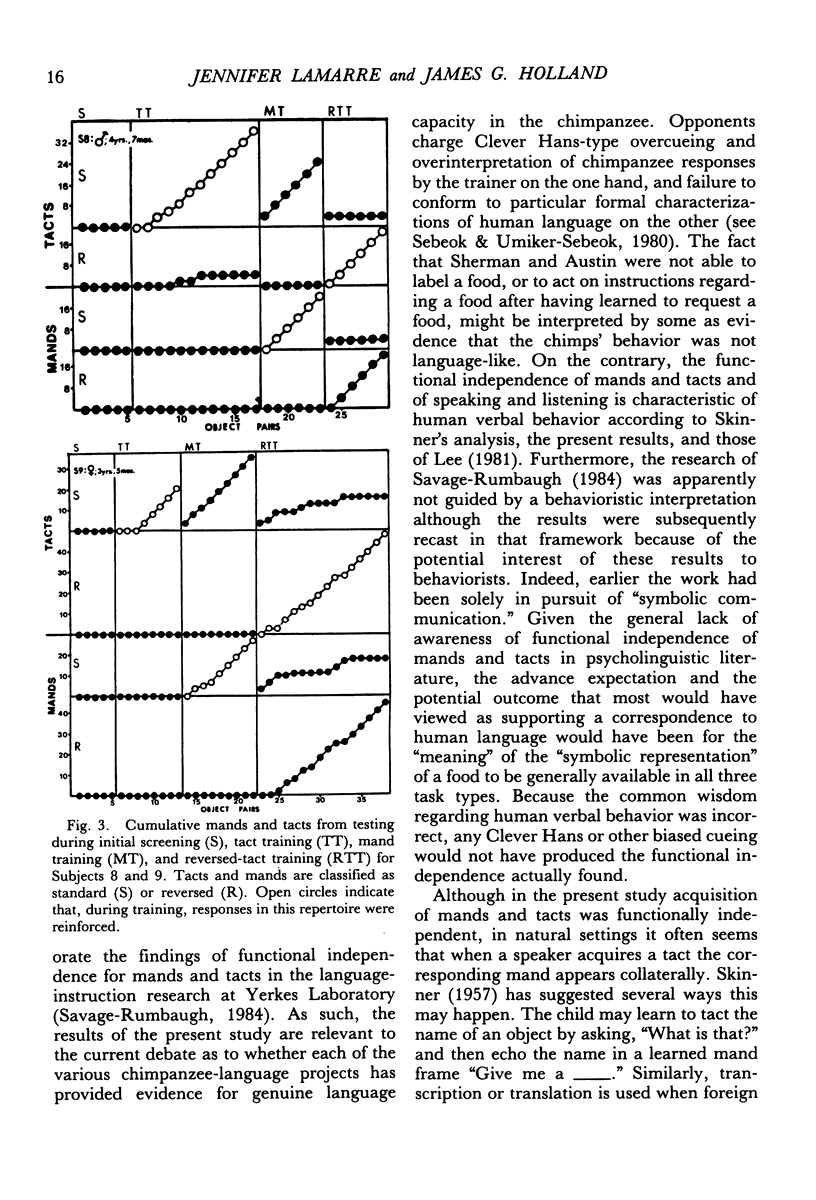
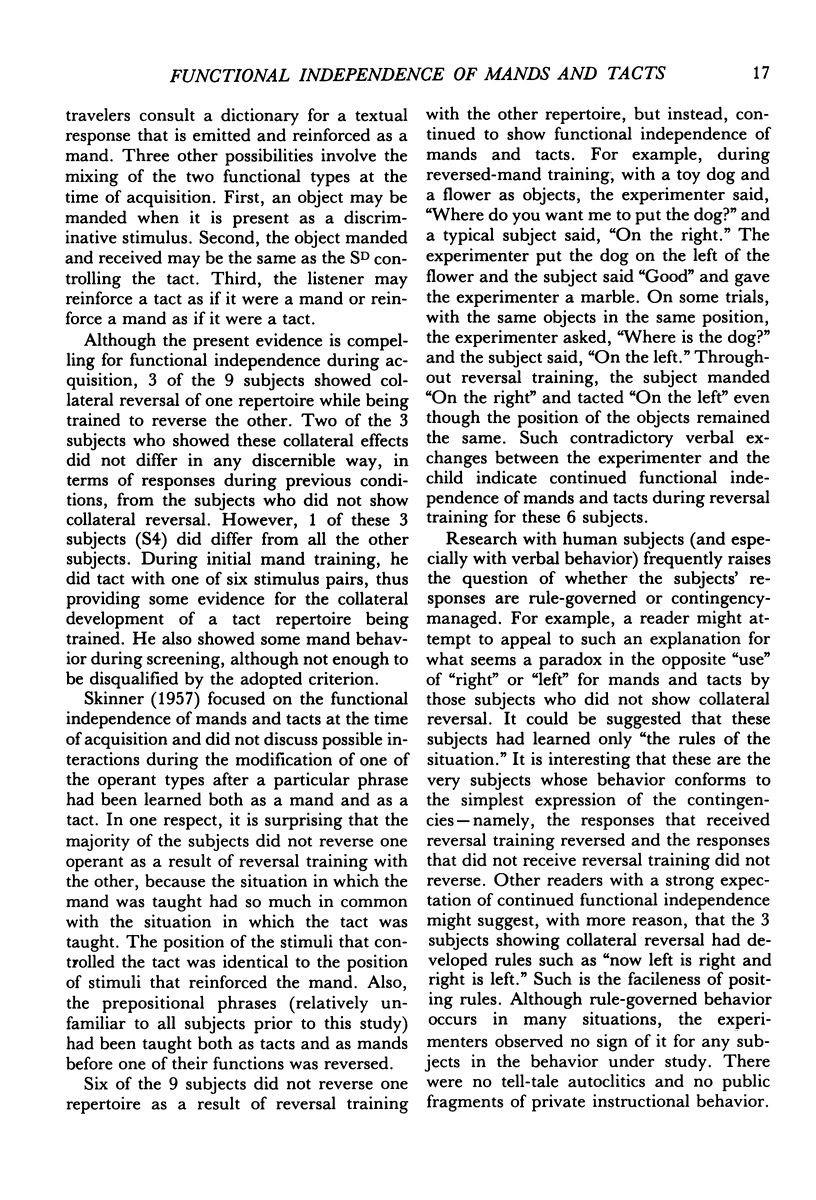
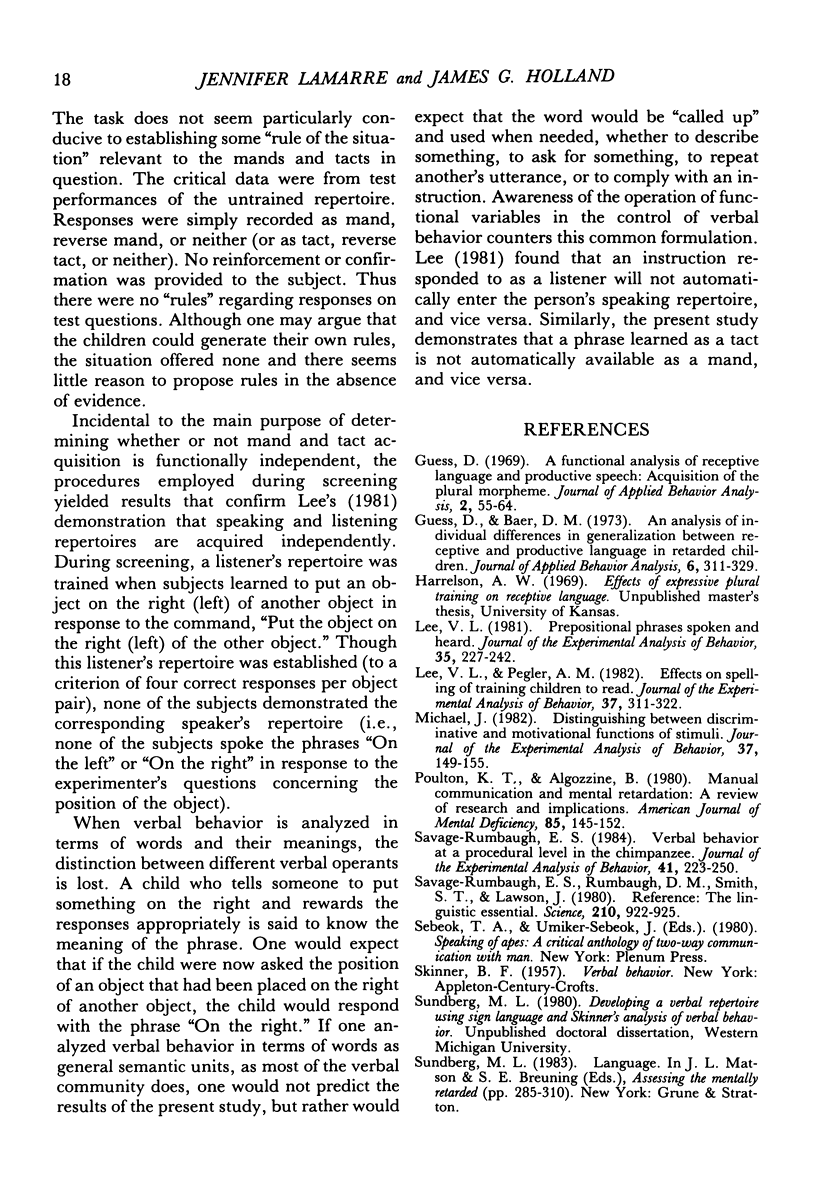
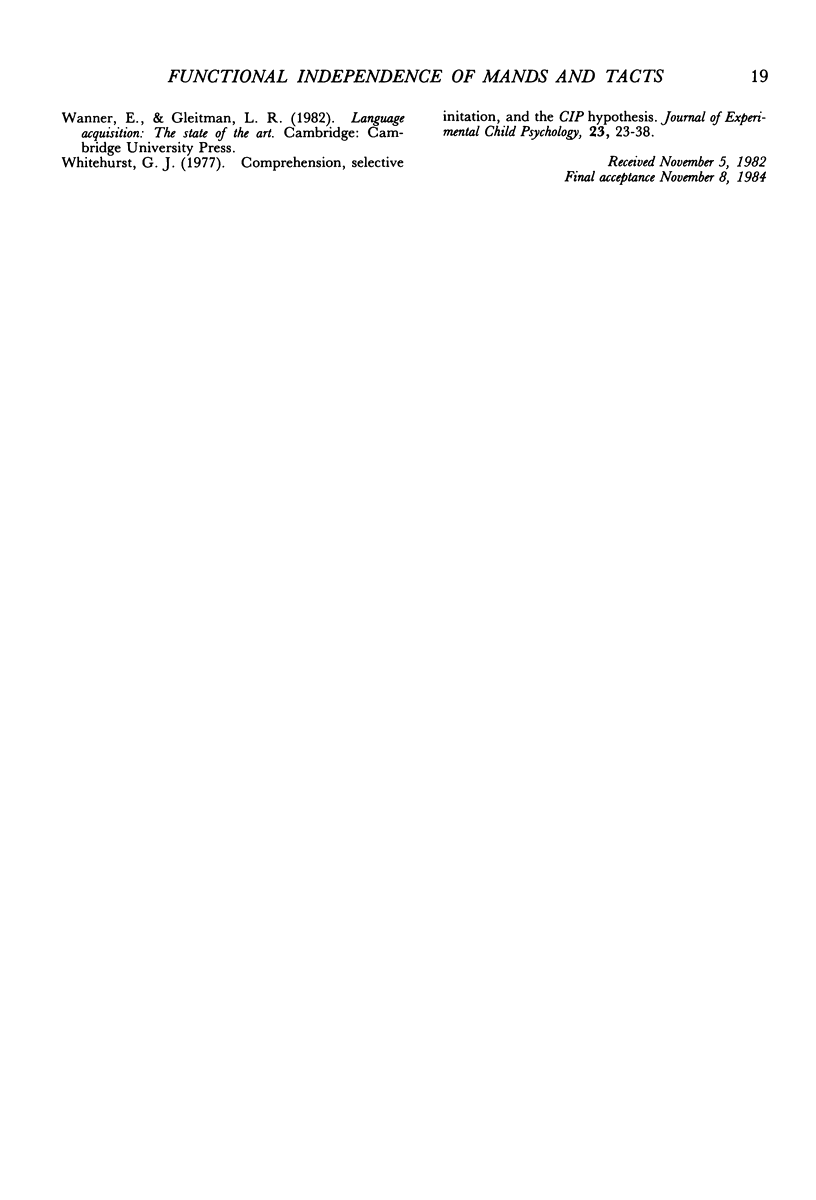
Selected References
These references are in PubMed. This may not be the complete list of references from this article.
- Guess D. A functional analysis of receptive language and productive speech: acquisition of the plural morpheme. J Appl Behav Anal. 1969 Spring;2(1):55–64. doi: 10.1901/jaba.1969.2-55. [DOI] [PMC free article] [PubMed] [Google Scholar]
- Guess D., Baer D. M. An analysis of individual differences in generalization between receptive and productive language in retarded children. J Appl Behav Anal. 1973 Summer;6(2):311–329. doi: 10.1901/jaba.1973.6-311. [DOI] [PMC free article] [PubMed] [Google Scholar]
- Lee V. L., Pegler A. M. Effects on spelling of training children to read. J Exp Anal Behav. 1982 Mar;37(2):311–322. doi: 10.1901/jeab.1982.37-311. [DOI] [PMC free article] [PubMed] [Google Scholar]
- Lee V. L. Prepositional phrases spoken and heard. J Exp Anal Behav. 1981 Mar;35(2):227–242. doi: 10.1901/jeab.1981.35-227. [DOI] [PMC free article] [PubMed] [Google Scholar]
- Michael J. Distinguishing between discriminative and motivational functions of stimuli. J Exp Anal Behav. 1982 Jan;37(1):149–155. doi: 10.1901/jeab.1982.37-149. [DOI] [PMC free article] [PubMed] [Google Scholar]
- Poulton K. T., Algozzine B. Manual communication and mental retardation: a review of research and implications. Am J Ment Defic. 1980 Sep;85(2):145–152. [PubMed] [Google Scholar]
- Savage-Rumbaugh E. S., Rumbaugh D. M., Smith S. T., Lawson J. Reference: the linguistic essential. Science. 1980 Nov 21;210(4472):922–925. doi: 10.1126/science.7434008. [DOI] [PubMed] [Google Scholar]
- Savage-Rumbaugh E. S. Verbal behavior at a procedural level in the chimpanzee. J Exp Anal Behav. 1984 Mar;41(2):223–250. doi: 10.1901/jeab.1984.41-223. [DOI] [PMC free article] [PubMed] [Google Scholar]


